#povray
Explore tagged Tumblr posts
Text
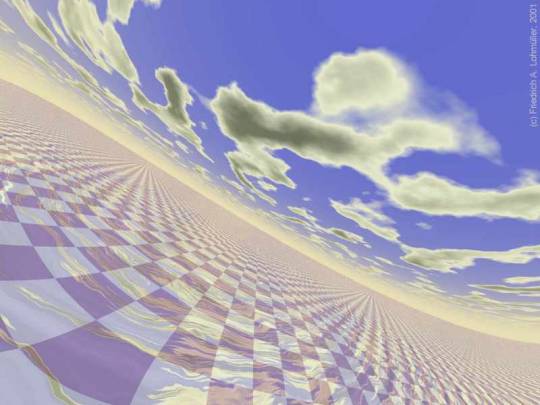
#vintage cgi#internet archive#wayback machine#old web#dreamcore#3dart#nostalgia#surreal#povray#raytracing#friedrich a. lohmüller#millenium#liminal space#checkerboard classic#vaporwave
1K notes
·
View notes
Text
First ever creation on POVRay, its ORBSMAN >:)))
(The lighting was a pain in the ass and so was the experience of positioning the cones)
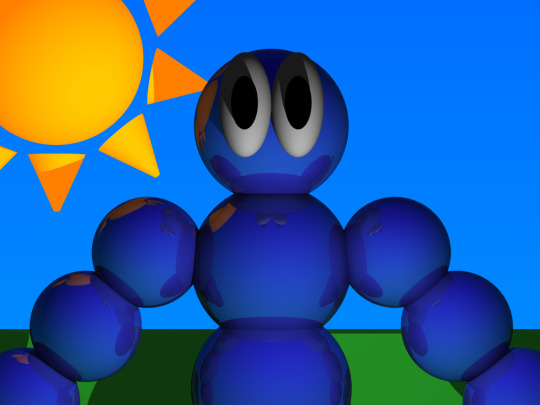
#povray#3d illustration#3d image#orbsman#tadc orbsman#tadc#the amazing digital circus#the amazing digital circus fan art#fanart#fan art#tadc fanart#the amazing digital circus orbsman#tadc ep 4
22 notes
·
View notes
Text
povray renders cuz ive been a little hyperfixated





38 notes
·
View notes
Text











Renders found on Japanese websites archived by the waybackmachine.
7 notes
·
View notes
Text
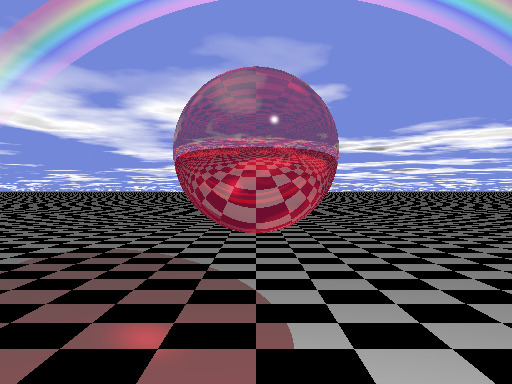
Messing around with POV-Ray is so much fun. I really miss the old internet.
6 notes
·
View notes
Video
tumblr
POV-Ray for Windows Dec 1996 Archived Web Page
0 notes
Text
I think we always had raytraced reflections. They just took weeks to render.

It’s still so wild that we have raytraced reflections now.
I don’t think game visuals/effects have really made the most of them yet.
[song: Ghost Data - Aromatheraphy]
8K notes
·
View notes
Text

i made a tool that lets you build POV-Ray scenes in the TrenchBroom level editor! it's heavily work-in-progress, but you can make cool stuff with it already!
https://github.com/erysdren/trenchbroom-pov-ray/
1 note
·
View note
Text
7.5 hours of typing to describe this scene

1 note
·
View note
Text

#vintage cgi#old web#dreamcore#3dart#nostalgia#surreal#y2k vibes#Gilles Tran#1990s#90s#nineties#old cgi#pov ray#povray#primitive shapes#hermits 1#oyonale#green guys
81 notes
·
View notes
Text
ANYWAY i need to figure out how to make unsettling 90s style cg art
#i would use an early version of bryce but i had to fight it a lot#then povray is just... that's a whole other language
5 notes
·
View notes
Text
Polyhedron of the Day #205: Gyroelongated square bicupola


The gyroelongated square bicupola is a Johnson solid (J45). It has 34 faces (24 triangles, 10 squares), 56 edges, and 24 vertices. Its Bowers-style acronym is gyesquibcu. It is one of five chiral Johnson solids. It is constructed by attaching a square cupola to each base face of an octagonal antiprism. Its dual is not uniquely named.
Left image created by AndrewKepert using Cyp's povray macros, CC BY-SA 3.0, https://upload.wikimedia.org/wikipedia/commons/5/51/Gyroelongated_square_bicupola.png.
Right image created using Robert Webb's Stella software, found at https://www.software3d.com/Stella.php.
27 notes
·
View notes
Text
Last Monday of the Week 2023-06-26
I have learned so many new things about the specifics of the GPL against my will.
Listening: Remembered that I was kind of hyped for Rodrigo y Gabriela's new album "In Between Thoughts... A New World" which is just a lot of showing off on the guitar. Very much the soundtrack to a movie that doesn't exist.
Reading: Finally remembered the books I was reading long enough to finish Children of Time. Bizzare ending, not bad, but I can see why this might lead to a less well received second book. Spidertech gets increasingly ridiculous in ways that are just on the balance of predictable and ridiculous that I find very funny. They do computing on ants. Also there is an entire society of intelligent mantis shrimp in the periphery of this book. They need a spin-off.
Started Kaiju Preservation Society by Scalzi. I have not in fact read very much Scalzi but this one did sound funny and I was down for sci-fi comedy.
Watching: Continuing the Fast and Furious Watch, with The Fast And The Furious (2009) which is the second movie called that. This feels like it's resetting the storyline so that they can go wherever they're planning on going with this. I liked it a normal amount! There is a level of restraint on display that does not come to mind when I tell you that within 5 minutes of the movie starting, Vin Diesel has driven a car underneath an exploding fuel tanker truck.
Playing: a lot of Mars First Logistics, the recently-in-early-access mars cargo robot building game.
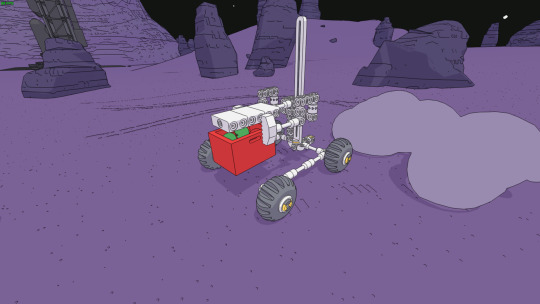
A good balance of constrained and freeform, parts are slowly meted out as you progress through the "story missions" in as much as those exist, which sees you building a rocket, a biosphere, a rover soccer stadium, a resort, etc. out of ever more unwieldy components in ever more inhospitable terrain.
At times navigation can become just straight up ridiculous, forcing you to either charge up and down steep hills with unstable cargo or attempt to gradually work your way the slow way around. A very forgiving vehicle reset and a less forgiving cargo reset goes a long way to making this manageable. You always have the option to strap rockets to your vessel and cast yourself to the wind, which comes in handy pretty often.
Making: Sat down with FreeCAD and sketched out the apartment for future use, now I need to do the furniture. FreeCAD is not the best or the worst CAD package I've used but it's basically the only one that runs on Linux, unless you have several thousand dollars to drop on Siemens NX. A halfhearted attempt to throw the skeleton of the apartment at povray resulted in this brutalist masterpiece.
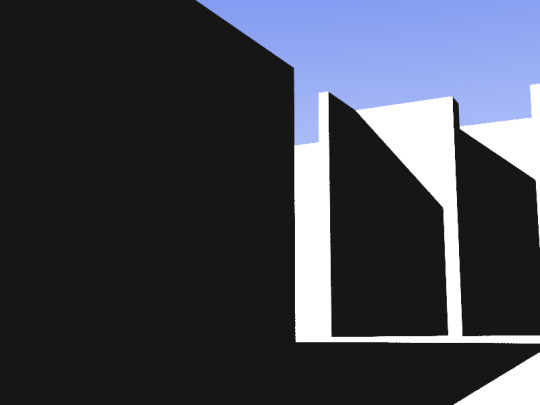
Tools and Equipment: I got the iFixit Prying and Opening Tool Kit which is a set of plastic wedges, spudgers, and cards intended for opening electronics. I've always just kind of done this with whatever is lying around and I gotta say it's a big improvement. They're decidedly consumable parts, but they're also cheap enough to justify that.
8 notes
·
View notes
Text
The angle of incidence (which is the only thing Lambert's law accounts for) is way more important than the inverse-square law. I just put together a simple scene in POVRay to demonstrate this.
First, here's a 1" sphere with the light close by (about 3 inches from the center), one using just Lambertian lighting and one using inverse-square lighting on top of that:


They're already pretty similar. Here's the same scene comparison with the light 3 feet away:


At this distance, the angle of incidence already massively overcomes the inverse-square law.
The inverse-square law for all practical purposes only really affects the amount of light that an object as a whole receives from a light source. Angle of incidence is way more important.
For an object with a distant light, the angle of incidence is spread out. In the case of illuminating a sphere, there is essentially a tangent cone where the point is the light source and the base is where the light is tangent to the sphere. The closer the light is, the squatter and more constrained the cone is. The further away, the more spread out it is as it tends towards being basically a cylinder.
Here's a simple diagram that hopefully demonstrates how the illumination cone's terminator moves towards the middle of the sphere as the light goes further away:

We can also figure out the relative influence of the different factors based on distance and angle of incidence. Here's a more detailed diagram of a sphere with close-up lighting with those calculations present:

In this setup, point A is 9 units away from the light (so it's getting 1% of the light's power per inverse square) while point B is 10.7 units away (so it's getting 0.8%). However, point A is facing the light directly so the Lambert coefficient is 1, while point B is facing away by 48° so its Lambert coefficient is 0.66. Point B is 53% the brightness of point A, and it's being attenuated by both factors, but the inverse-square attenuation is only 20% while the Lambert attenuation is 34%.
Inverse-square does make a difference when the light is super close, but it doesn't take long for the angle of incidence to fully dominate in terms of what we see.



The original image is stupid. That's a given. I guess they are trying to ask why the Moon doesn't have a bright spot and dark edges.
But the Community Note isn't much better.
The short answer is... the Moon is bumpy and the Sun is far away.
The long answer requires me to do some math. So I apologize in advance if I get some numbers wrong. But I promise you will learn some neat things about light if you are into that.
First, I have no idea why they brought retroreflectiveness into this.
Retroreflection is when light is reflected back at the angle of incidence. Meaning no matter what angle you shine light from, it will always reflect straight back to you.

It's a bit of an optical magic trick. It is how street signs and highway markers work.
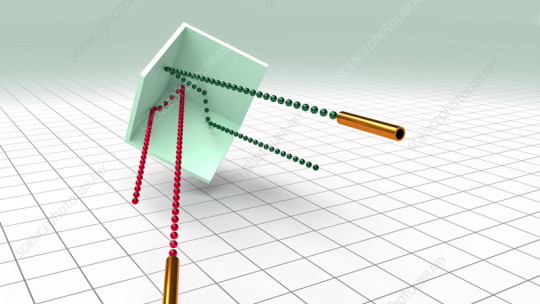

Weirdly enough, astronauts placed a manmade retroreflector on the Moon which people can use to reflect lasers and disprove the fake Moon landing theory.
The Moon may have retroreflective properties, but that effect would only really be noticeable if you were to shine a tight beam of light like a laser or something. Retroreflection would be more apparent from the perspective of the Sun, not the Earth.
You know what, I should just read the source and see what they are talking about.
"The edges of the full moon seem as bright as the center, without limb darkening, because of the reflective properties of lunar soil, which retroreflects light more towards the Sun than in other directions."
Hey, I was right about the Sun.
But this is a bad explanation. A rare L for Wikipedia. I even checked the primary reference and it doesn't even talk about retroreflectance. It does seem to be a factor, especially for the very outer edges, but looking at other sources my initial answer of the Moon being bumpy and the Sun being far away is much better.
So... let's learn some shit about light.
First we should talk about surface texture as mentioned. You have glossy surfaces and matte surfaces and a spectrum in between.

A glossy surface reflects light very directly (specular). A matte surface scatters light in many directions (diffused). This has to do with how smooth or bumpy the surface is.

The Moon is very rocky and bumpy and dusty, so it has a very matte surface. And I'm guessing since some rays bounce back toward the Sun, we don't get as many direct reflections that would add specularity. Perhaps there is a Moon expert who can weigh in on how much that actually diffuses the light beyond the matte surface texture.
And the reason the Moon is so evenly lit has to do with the distance of the light source. Again, the Sun is super duper far away.
When light is very close to something, it falls off very quickly.
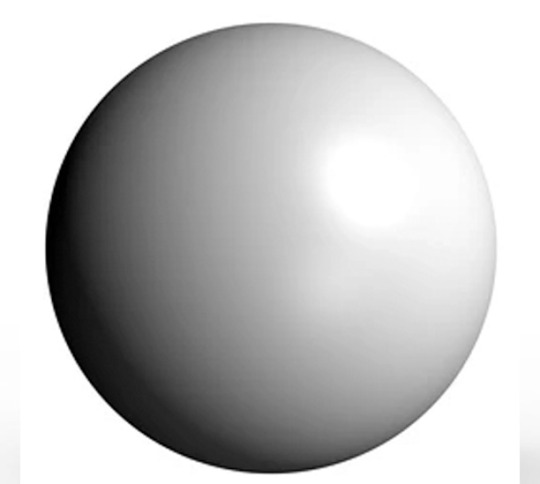
When light is far away, the falloff is very gradual.

From the camera's perspective, the edges of the sphere are farther away than the center. When the light is closer, the edges of the sphere appear darker. But when the light is farther away, the edges of the sphere appear to have a similar intensity compared to the center.
The surface of the Moon is not a consistent distance from us. It is a spheroid so the edges are nearly a thousand miles farther away than the center. But the edges don't fall off into shadow from our perspective.
This is a property of the inverse square law.
Let's say you wanted to light two people and the light was very close—one person might end up in the light's falloff.


But if you move the light farther away and crank up the power, the two people will seem evenly lit.


You can think of light a bit like a shotgun in a video game. When you are close to something the shotgun has a very tight spread and is more lethal. When farther away, it has a larger spread but the lethality is decreased.

The first shotgun blast is very intense directly in the center but has no effect on the edges. The second blast has more even coverage, but the intensity is spread out and diminished.
From a point light source, light starts out very concentrated but the photons spread out over a distance. This dilutes the intensity of the light. The inverse square law says for every doubling of distance, the light becomes 1/4th as bright.

You have the same amount of photons but a larger area to light up. So coverage increases but intensity decreases.
Check out the background in these images.
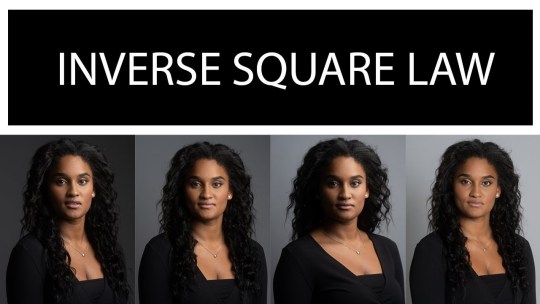
In the first photo, the light is very close to her face. The intensity of the light is very concentrated. From the perspective of the camera, her face is super bright, but the background is very dim in comparison.
But as you move the light farther away, the photons spread out. If you leave the light on the same power and the camera at the same exposure, the photo on the right would look very dim—probably just pure black. So you'd have to compensate by increasing the power of the light (more photons) or adjusting the exposure of the camera (higher sensitivity) or both. But once you make those adjustments the background and her face seem very evenly lit.
In the first photo, relative to the light source, the background is far away compared to her face. The light might be 5 feet from her face but 10 feet from the background. It has to travel double the distance to hit the background so the intensity of the light hitting the background is 75% darker than the light hitting her face.
The majority of photons are hitting the face and only a few are escaping to the background.
But if the light is 20 feet from her face and 25 feet from the background, the light only travels 25% farther to hit the background. So the background is only 36% darker than the light hitting her face.
To achieve the same exposure the number of photons is increased substantially, but they are spread out and not concentrated in one area.
If you increase the distance enough, the difference gets less and less perceptible.

Now imagine the light is 93 million miles away. The background would only be 0.0000000004% darker than her face.
From the Earth's perspective, the edge of the Moon is roughly 1000 miles farther away from the center of the Moon. And about 0.001075% farther from the Sun. The falloff of light would be impossible for our eyeballs to detect.
To review, the Moon has edge-to-edge lighting with no specular highlights because the surface is bumpy and scatters light and the Sun is ridiculously far away. I'm sure there are other optical effects at play due to the atmosphere and reflective properties mentioned, but by and large, that is what's going on.
It's the same reason the face of a large boulder in direct sunlight doesn't have any bright spots or quick shadow falloff.

Can you use this knowledge to help your photography?
Yes!
Lighting indoor group photos can be very tricky.

You often have several rows of people. If your light source is too close, you may have difficulty getting a good exposure on all of their faces because of the varied distances involved. The back row of people may appear very dark. But if the light is too far away, you may end up getting harsh shadows.
Large light sources produce softer, more flattering light.
Small light sources produce harder, harsher light.
Distant light sources produce even light.
Distant light sources have a smaller apparent size.
Which means you need really big modifiers so you can put the light far enough away to get soft AND even lighting. You have to make the light sources bigger to compensate for the distance.

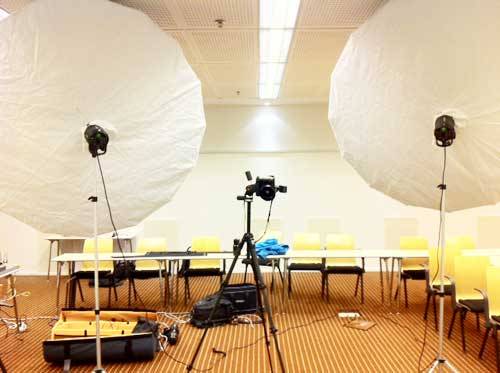
If all you have is a flash, you can bounce it off the ceiling or a large white wall to increase the size of your light source. Just make sure it is far enough away from everyone to get a proper exposure of all their smiling faces.
348 notes
·
View notes
Text

🟣 b l o r p w a v e 🟣
134 notes
·
View notes
